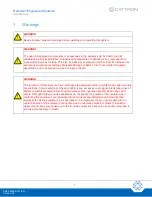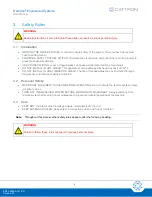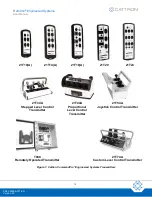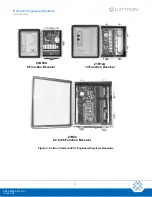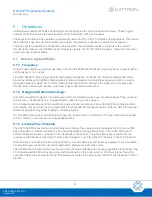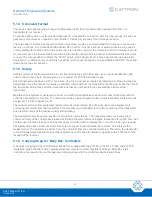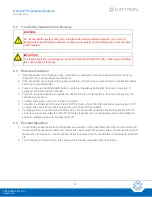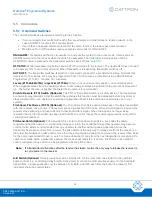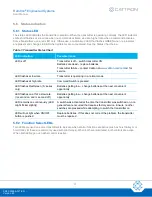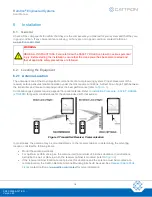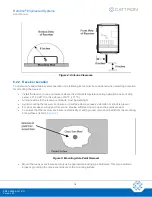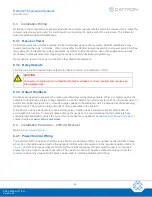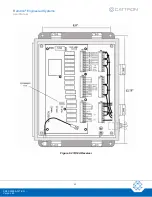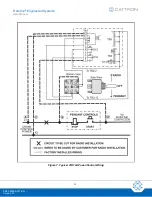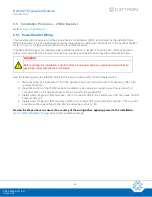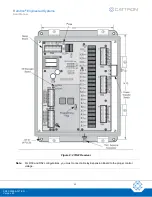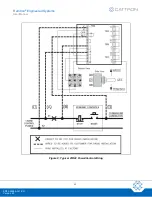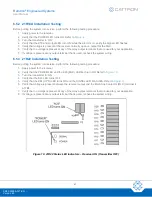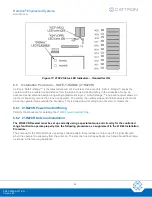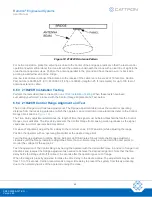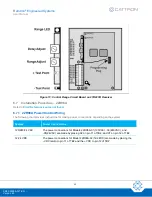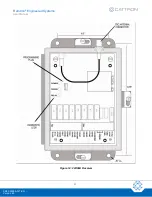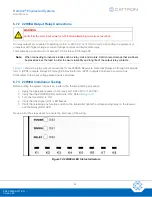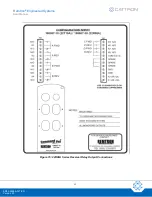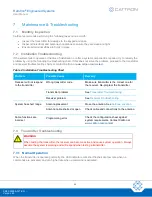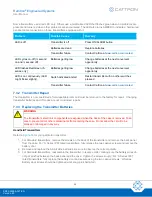
Remtron
®
Engineered Systems
User Manual
20
9M02-9028-A021-EN
Version 4.0
6.3
Installation Wiring
Referring to the configuration sheet provided with the receiver (usually located within the receiver door), dress the
receiver output relay wiring and the control switch wiring along the inside wall of the enclosure. This allows for
easy troubleshooting and maintenance.
6.3.1 Receiver Power
Cattron receivers are normally prewired for the most widely used control systems. Specific installations may
require rewiring the relay ‘commons’. When connecting the Cattron receiver assembly to a power source that has
large amounts of interference (noise) generated by motors and/or contactors, use noise suppression devices
(snubbers) to prevent noise from triggering the receiver’s safety shutdown programming.
Never use the receiver case as a ground for other electrical equipment.
6.3.2 Relay Outputs
Limit the load current applied to the output relay bank ‘common’ to a maximum of 10 A.
CAUTION
Connection to equipment or contactors with higher voltage or current requirements requires an
intermediate relay.
6.3.3 Output Snubbers
Snubbers are needed to suppress the noise generated from arcing relay contacts. When a contactor opens, the
contactor coil produces a large voltage potential, much like automotive ignition systems. When the points open on
automotive ignition systems, the coil sends a large voltage to the distributor which jumps across the spark plug
(called
arcing
). The result is a large amount of noise generated in the system.
A snubber is a device designed to reduce arcing (noise). Cattron uses a resistor-capacitor combination to
accomplish this function. To prevent noise entering the receiver, it is recommended that all contactors have
snubbers installed directly across the coils. If more snubbers are needed, see the
contact Cattron at
6.4
Installation Procedure
– 21R14A Receiver
6.4.1 Power/Control Wiring
The transfer switch is wired so that the crane’s Main Line Contactor (MLC) is controlled by the radio MLC relay
when it is in the radio position and by the pendant controls when the switch is in the pendant position. Refer to
(21R14A) for typical input control wiring for overhead cranes. Transfer switch wiring is not required
unless there is a need for pendant operation. The switch can normally be wired without removing it from the
receiver cabinet. Any unused switch poles can be used for isolating additional functions.
!

